Kimchi Ramen Noodles with Pork and Bok Choy
Savor the bold, spicy flavors of Kimchi Ramen Noodles with Pork and Bok Choy, a comforting Korean-inspired dish. Tender pork, tangy kimchi, and crisp bok choy meld with slurp-worthy ramen in a rich, umami-packed broth, perfect for a cozy dinner bursting with vibrant, soul-warming tastes.
Why You’ll Love This Recipe
This Kimchi Ramen Noodles with Pork and Bok Choy recipe is a game-changer for anyone craving a quick yet deeply satisfying meal. The fiery kick of kimchi pairs beautifully with succulent pork and fresh bok choy, creating a harmonious balance of spicy, savory, and slightly sweet flavors. The dish comes together in under 30 minutes, making it ideal for busy weeknights when you want something hearty but fuss-free. The customizable spice level and flexible ingredients mean it suits both adventurous eaters and those who prefer a milder taste. Plus, the vibrant colors and fragrant aromas make every bowl a feast for the senses, turning a simple dinner into a memorable culinary experience.
Recipe Tips and Tricks
- Control the Heat: Adjust the kimchi quantity or choose a milder variety to suit your spice tolerance.
- Quick Prep: Slice pork thinly while partially frozen for easier cutting and faster cooking.
- Boost Umami: Add a splash of fish sauce or a sprinkle of MSG for an extra savory depth.
- Fresh Ramen: Use fresh or frozen ramen noodles for a chewier, more authentic texture than instant packets.
- Don’t Overcook Bok Choy: Add it in the last minute to retain its crisp-tender bite and vibrant green color.
- Taste as You Go: Adjust soy sauce and sesame oil to balance saltiness and richness to your preference.
Kimchi Ramen Noodles with Pork and Bok Choy
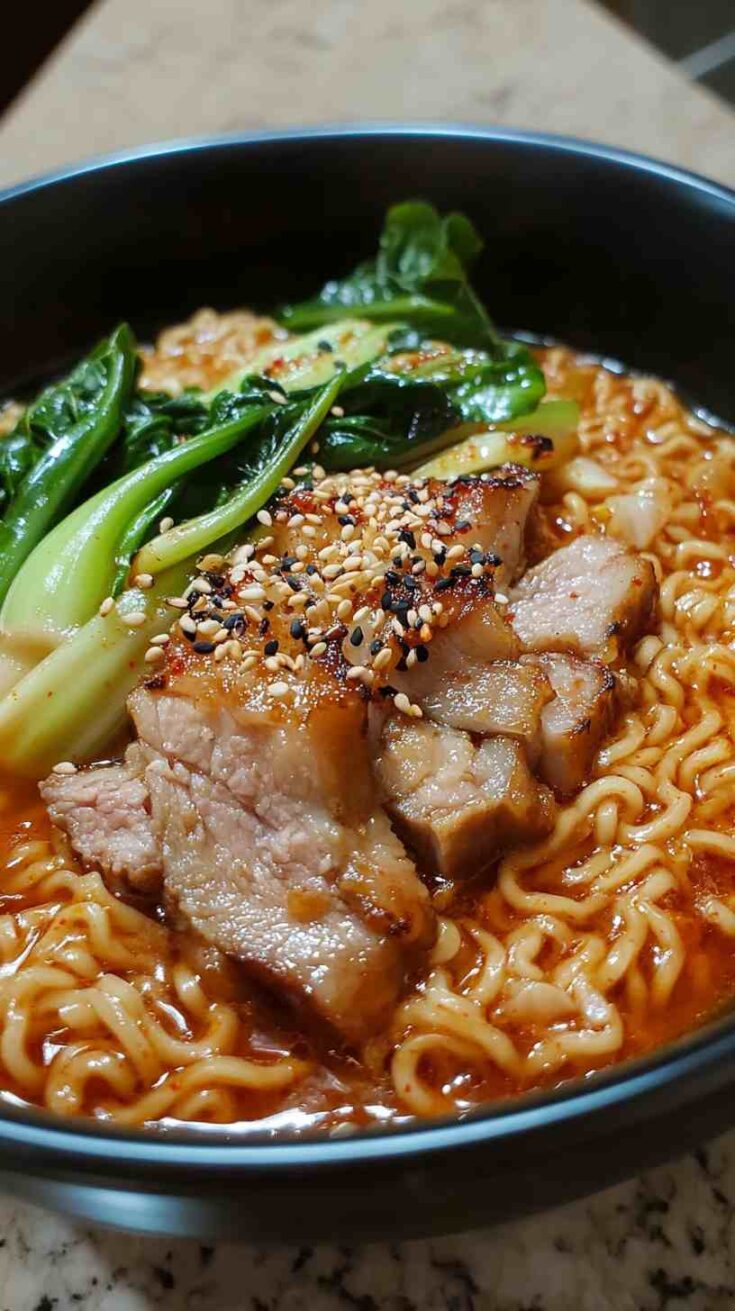
Spicy Kimchi Ramen Noodles with tender pork and crisp bok choy in a savory broth, perfect for a quick, flavorful dinner.
Ingredients
- 8 oz fresh ramen noodles (or dried instant noodles)
- 1 lb pork shoulder or loin, thinly sliced
- 1 cup kimchi, chopped
- 2 heads baby bok choy, halved or chopped
- 2 tbsp gochujang (Korean chili paste)
- 3 tbsp low-sodium soy sauce
- 1 tbsp toasted sesame oil
- 3 cloves garlic, minced
- 1-inch piece ginger, minced
- 4 cups low-sodium chicken broth
- 2 green onions, sliced (white and green parts)
- 2 large eggs, soft-boiled (optional)
- 1 tbsp vegetable oil
- 1 tsp sesame seeds (for garnish)
- Salt and pepper, to taste
Instructions
- Prep Ingredients: Slice pork thinly, chop kimchi, mince garlic and ginger, and halve or chop bok choy. Set aside for easy access.
- Cook Noodles: Boil ramen noodles in a pot of water according to package instructions (about 3-5 minutes for fresh). Drain and set aside.
- Soft-Boil Eggs (Optional): In a small pot, boil eggs for 6 minutes, then transfer to an ice bath. Peel and set aside.
- Sauté Aromatics: Heat vegetable oil in a large pot over medium heat. Add garlic and ginger, stirring for 30 seconds until fragrant.
- Cook Pork: Add sliced pork to the pot, season with a pinch of salt and pepper, and cook for 3-4 minutes until lightly browned.
- Add Kimchi and Gochujang: Stir in chopped kimchi and gochujang, cooking for 2 minutes to meld flavors and release aromas.
- Simmer Broth: Pour in chicken broth and soy sauce, stirring to combine. Bring to a gentle boil, then reduce to a simmer for 5 minutes.
- Add Bok Choy: Toss in bok choy and cook for 1-2 minutes until crisp-tender, retaining its vibrant green color.
- Assemble Bowls: Divide cooked noodles into four bowls. Ladle hot broth with pork, kimchi, and bok choy over the noodles.
- Garnish and Serve: Drizzle with sesame oil, sprinkle with green onions and sesame seeds, and top with halved soft-boiled eggs. Serve immediately and enjoy!
Notes
- Adjust kimchi and gochujang for desired spice levels; start small if sensitive to heat.
- For extra crunch, add bean sprouts or sliced radish as a garnish.
- Fresh ramen noodles elevate the dish, but instant noodles are a budget-friendly alternative.
- Ensure pork is sliced thinly for quick, even cooking and tenderness.
Nutrition Information
Yield
4Serving Size
1Amount Per Serving Calories 562Total Fat 37gSaturated Fat 12gTrans Fat 0gUnsaturated Fat 22gCholesterol 195mgSodium 1459mgCarbohydrates 20gFiber 2gSugar 6gProtein 38g
The recipes and nutritional information on Yum Tonight are for informational purposes only. Always consult a healthcare provider for personalized dietary advice.
Ingredients Notes
- Ramen Noodles: Fresh or frozen ramen noodles provide the best texture, but dried instant noodles work in a pinch. Avoid pre-seasoned packets to control flavor.
- Pork: Thinly sliced pork shoulder or loin offers tenderness and quick cooking. Opt for well-marbled cuts for richer flavor.
- Kimchi: Choose well-fermented kimchi for a bold, tangy punch. Homemade or store-bought both work; check for spice level.
- Bok Choy: Baby bok choy is tender and cooks quickly, but regular bok choy works if chopped finely.
- Gochujang: This Korean chili paste adds depth and heat; adjust for desired spiciness or substitute with sriracha in a pinch.
- Soy Sauce and Sesame Oil: Low-sodium soy sauce prevents over-salting, while toasted sesame oil adds nutty richness.
- Garlic and Ginger: Freshly minced enhances aroma and flavor; avoid pre-chopped for maximum freshness.
- Green Onions: Use both white and green parts for flavor and garnish, adding a fresh, sharp contrast.
- Chicken Broth: Low-sodium broth allows better control over seasoning; homemade adds an extra layer of depth.
- Eggs: Soft-boiled eggs add creamy richness; cook separately for precise doneness.
Variations and Substitutions
For a vegetarian twist, swap pork for tofu or mushrooms, like shiitake or oyster, to maintain umami depth. If kimchi’s too spicy, use less or opt for a mild version, or substitute with pickled radish for tang without heat. Replace bok choy with spinach, kale, or napa cabbage for similar texture and nutrition. For gluten-free diets, use rice noodles or gluten-free ramen and tamari instead of soy sauce. If gochujang is unavailable, try miso paste with a pinch of chili flakes for a comparable depth. For a richer broth, add a splash of coconut milk or a dollop of peanut butter for a creamy, nutty twist. Experiment with proteins like shrimp, chicken, or beef to suit your preferences or pantry staples.
Storage Options
Store leftover kimchi ramen in an airtight container in the refrigerator for up to 3 days. Keep noodles separate from broth to prevent sogginess; reheat broth on the stovetop over medium heat and add noodles just before serving. For longer storage, freeze the broth and pork mixture (without noodles or bok choy) for up to 2 months. Thaw overnight in the fridge and reheat gently. Fresh bok choy and soft-boiled eggs are best prepared fresh to maintain texture and flavor.
Dish Gallery
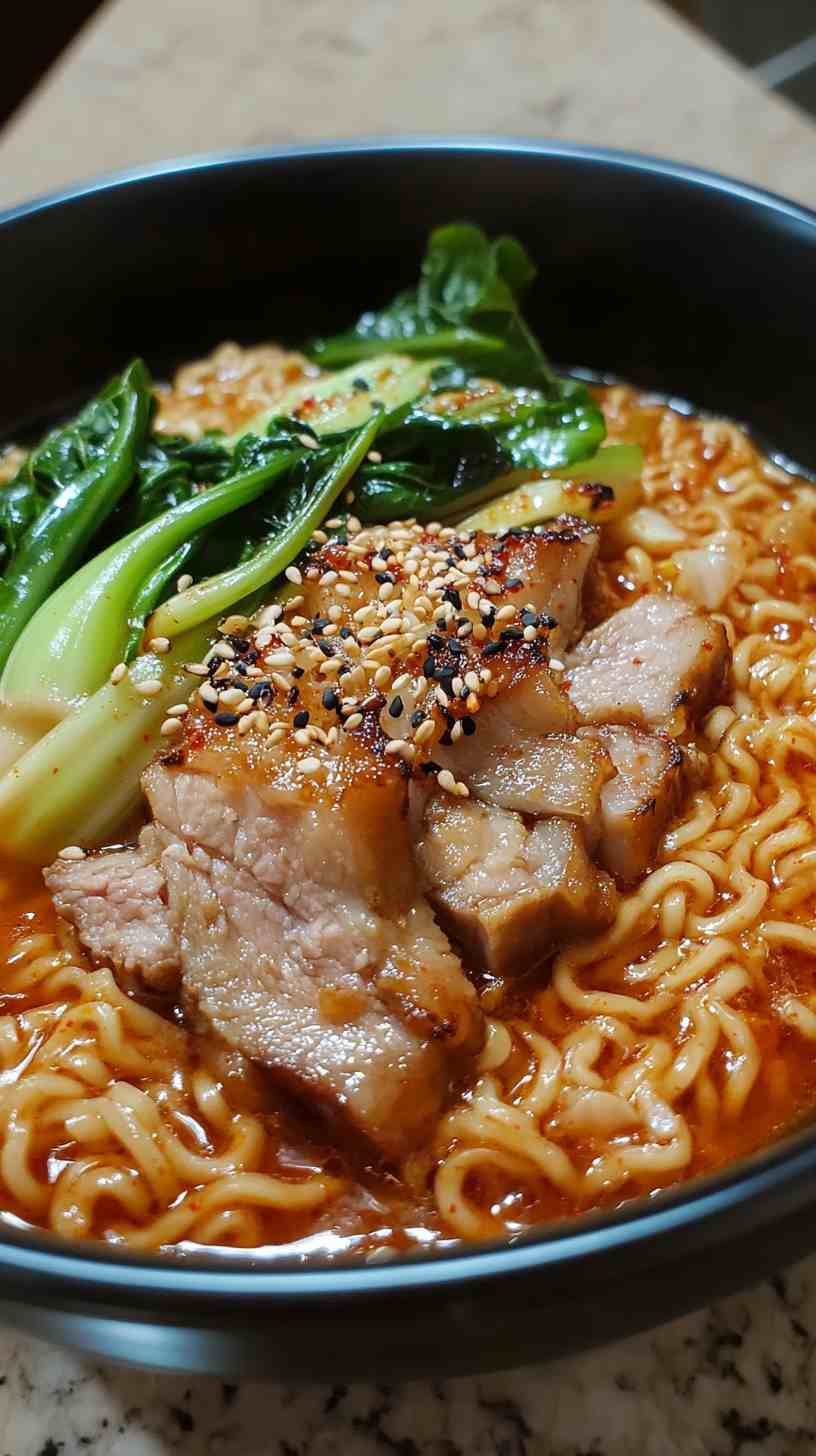
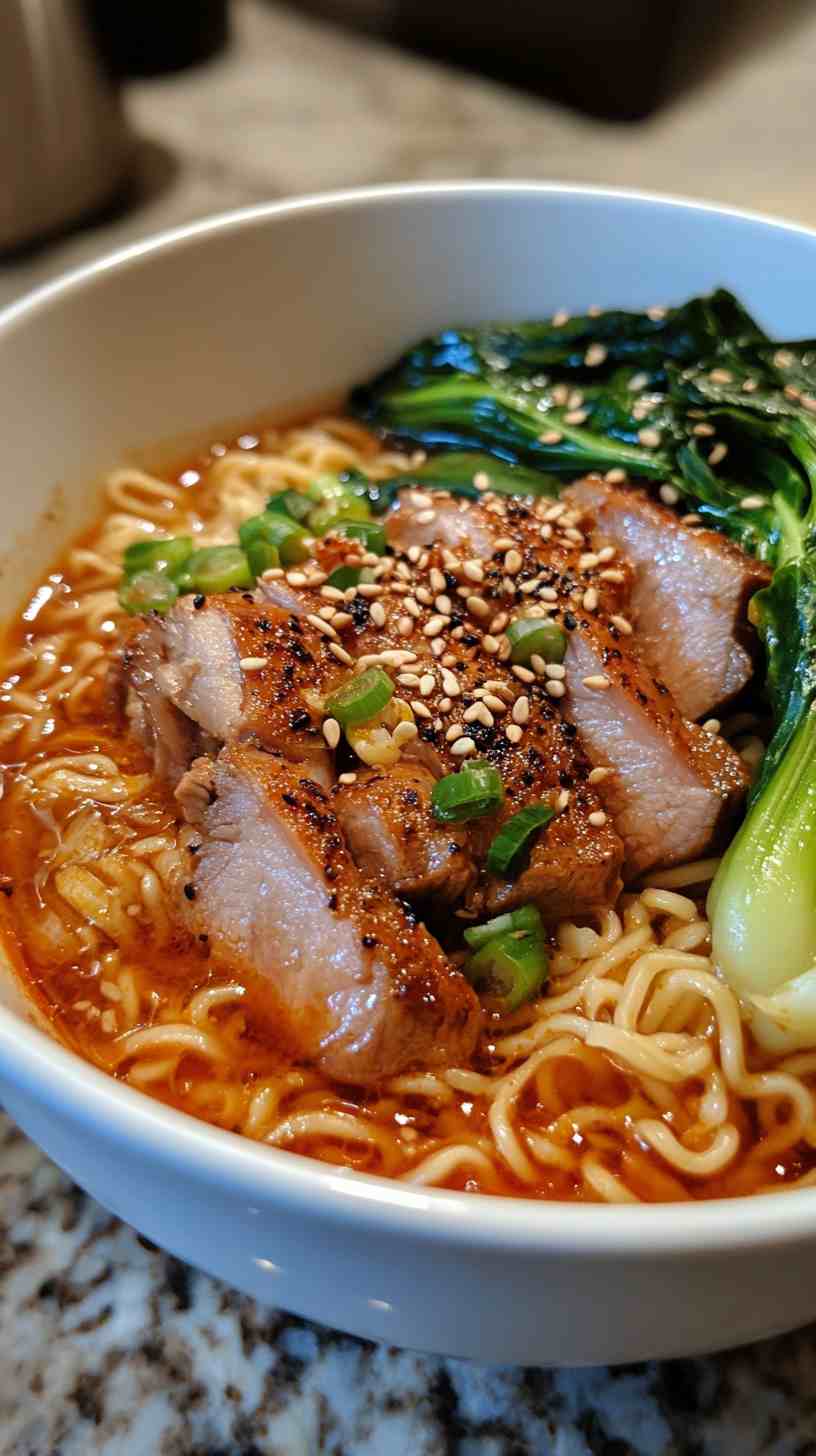
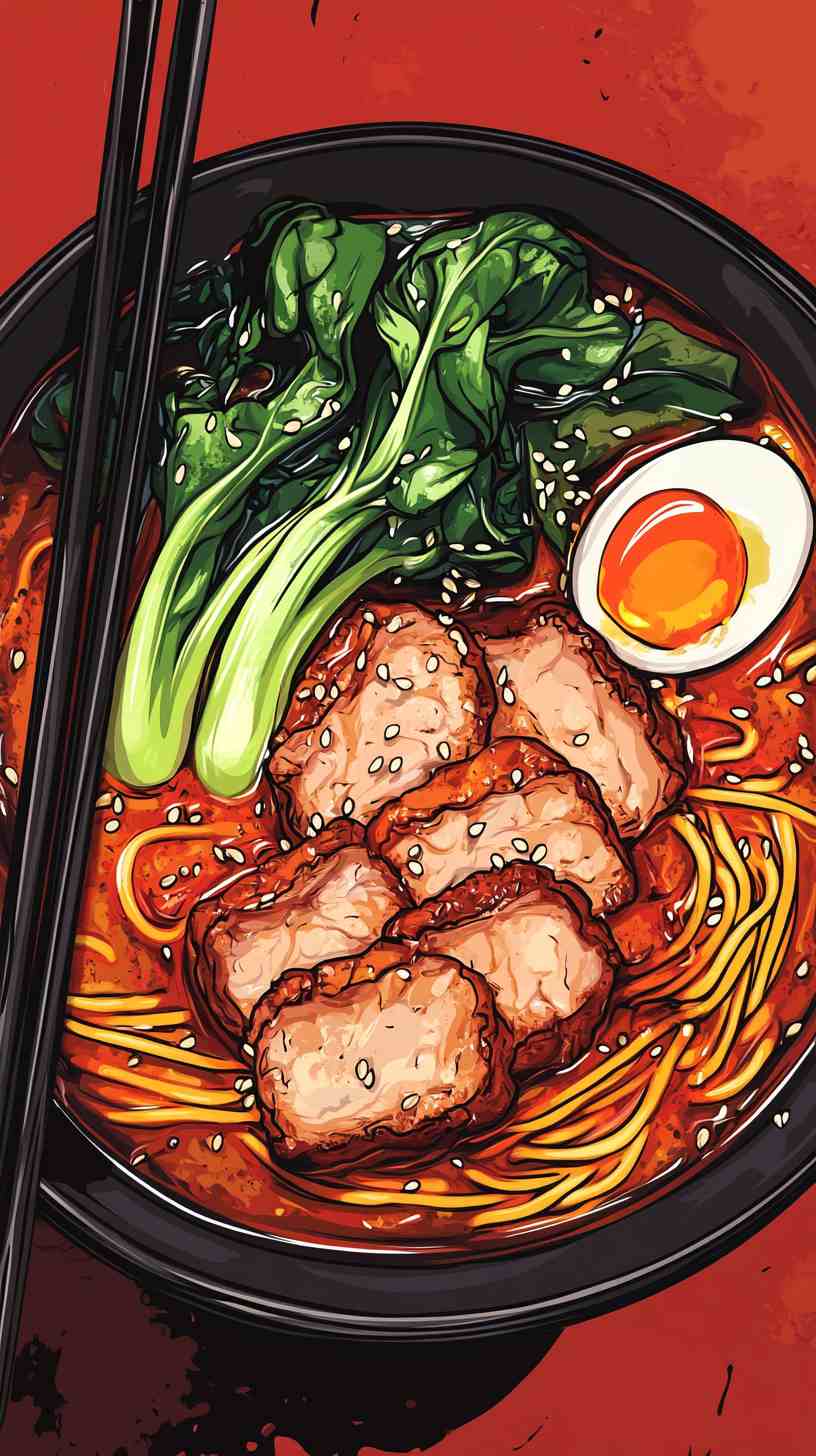

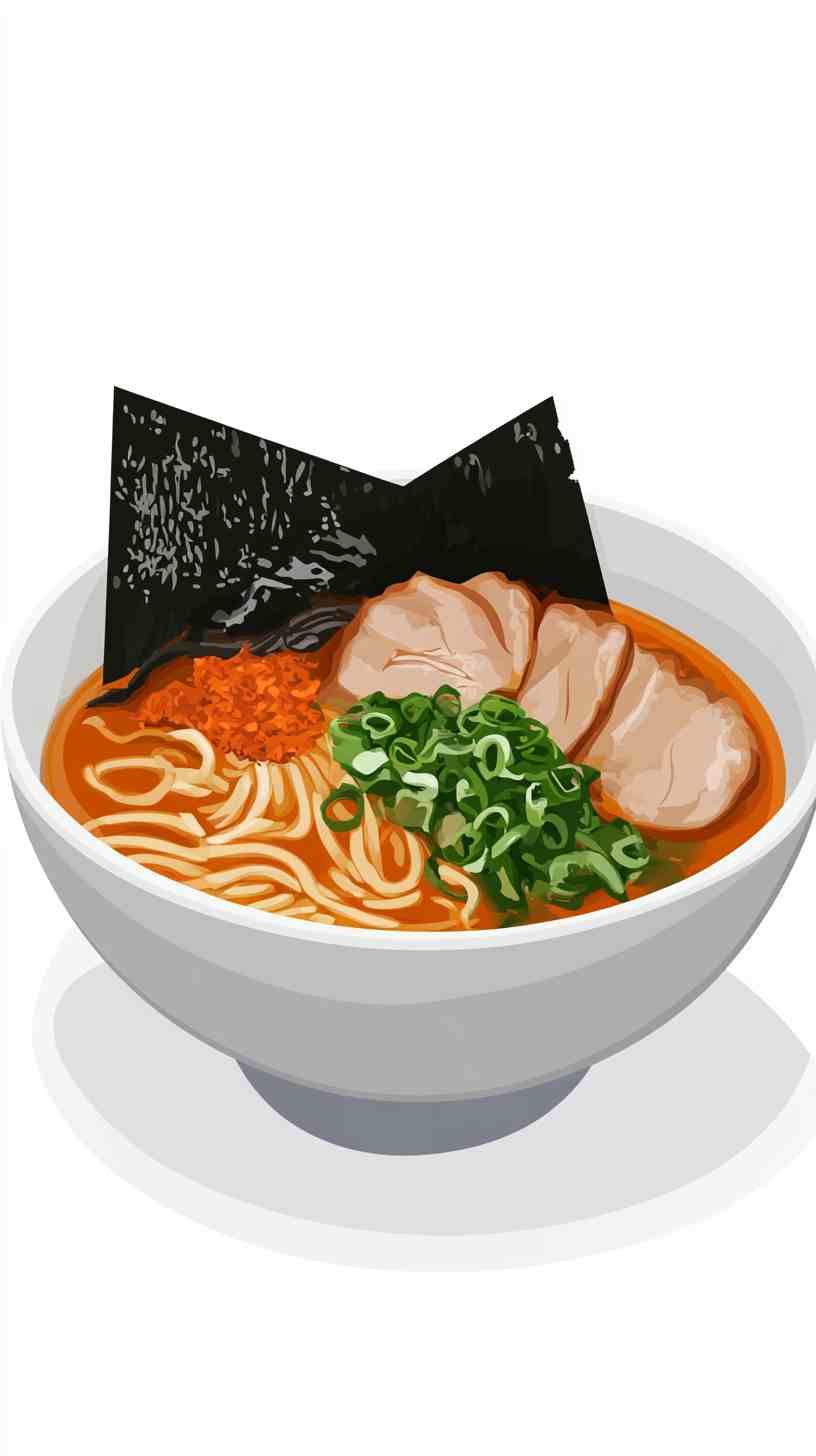






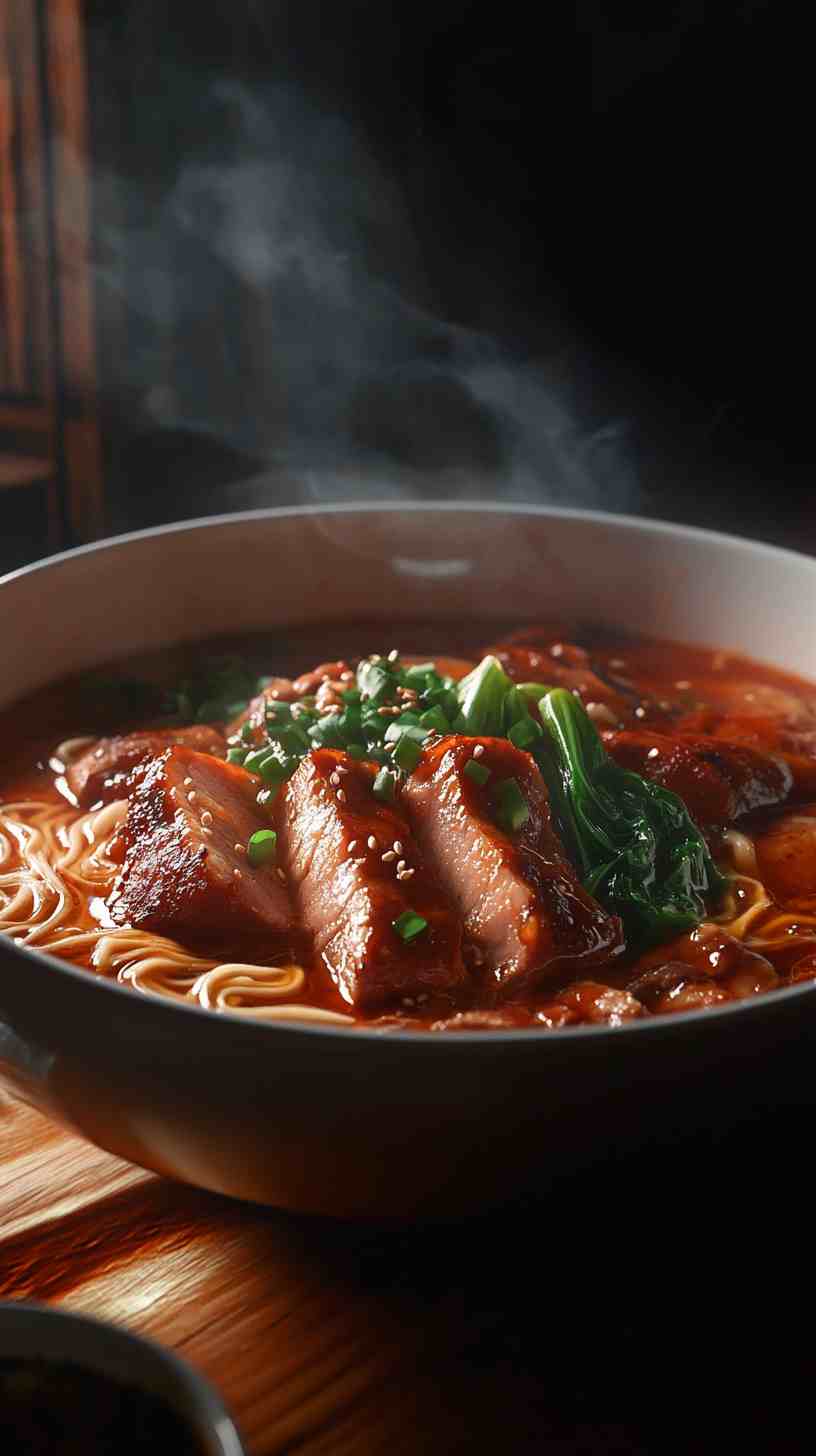
Please share these Kimchi Ramen Noodles with Pork and Bok Choy with your friends and do a comment below about your feedback.
We will meet you on next article.
Until you can read, Garlic Soy Sauce Ramen Noodles with Grilled Chicken






